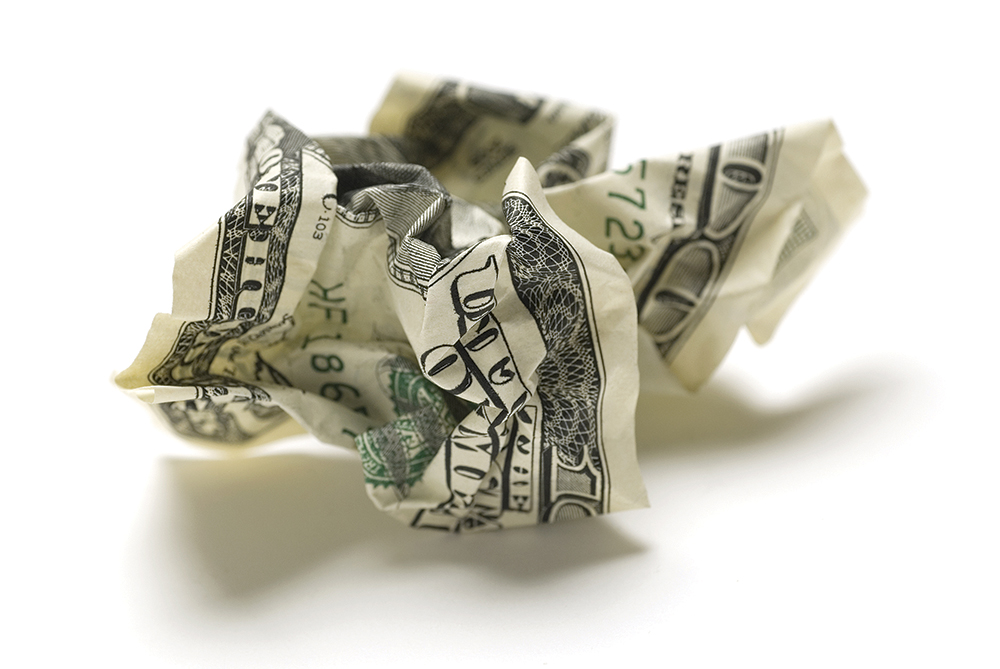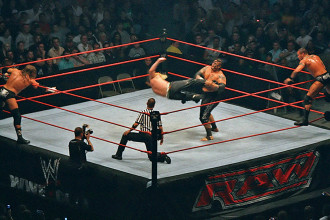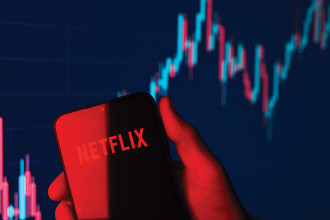
Some say the free market can’t be trusted to handle money, but the truth is exactly the opposite. It’s the government that creates problems with money.
As I was going through my wallet the other day, I came across a bill that was rather folded and scrunched up. If you are older than 20, you can probably relate. It had obviously changed hands countless times in its life. Somewhere along the way someone must have hastily shoved it into their wallet, giving it creases that remain to this day. Ever since it has been a bother for whoever holds it, decrepit, annoying, and inconvenient.
My first reaction upon discovering this bill was the same as every other person who has ever faced this problem: I need to find an excuse to spend this. If only I could spend it, I thought to myself, then I could get rid of it without taking a loss.
Noticing the incentive, the economist in me started teasing out the implications.
I am not the only person who faces this incentive, I realized. Everyone does. As a result, vendors must get flooded with all sorts of scrunched, folded, and ripped bills every day.
But the vendors don’t want to hold on to these bills any more than I do. They no doubt want to get rid of them too, either by depositing them in the bank or using them to buy something else.
Of course, this money does slowly get weeded out and replaced with new money over time. But in the interim, we have a bit of a problem. When everyone is trying to get rid of their scrunched bills, we end up in a world where scrunched bills are overrepresented in circulation. They might make up 5% of the bills at any given time, yet they are used in say 15% of transactions, just because everyone is constantly trying to get rid of them.
Theoretically, they could even come to dominate transactions if there are enough of them. Crisp, new bills would virtually disappear from circulation. Everyone would constantly be making exchanges with all this “bad” money. One could almost say “bad money drives out good money.”
The astute reader will recognize this as the classic formulation of Gresham’s law. Indeed, the scrunched bill phenomenon seems to be an example of Gresham’s law in action (whether it really is or not will be clarified shortly).
A Flaw in the Free Market?
Now, some may argue that the phenomenon of bad money driving out good money is a flaw with the free market. It is evidence, they say, that the market is incapable of handling money well. But the truth is the opposite. Money is currently controlled by the government! This is evidence that the government does a terrible job with money. As so often happens, the free market is blamed for a problem that was directly caused by restrictions on the market. The free market is not the problem. It’s the solution.
As Jesus might say, get me a coin. Show me the dollar bill. Whose name is on it? Whose inscription? It says right there, “Federal Reserve Note: The United States of America.” Okay then, let the government take responsibility for government money, and let the free market take responsibility for free market money (gold, bitcoin etc.).
In his book What Has Government Done to Our Money?, the economist Murray Rothbard sets the record straight by clarifying the meaning of Gresham’s law.
“Champions of the government’s coinage monopoly have claimed that money is different from all other commodities, because ‘Gresham’s Law’ proves that ‘bad money drives out good’ from circulation. Hence, the free market cannot be trusted to serve the public in supplying good money. But this formulation rests on a misinterpretation of Gresham’s famous law. The law really says that ‘money overvalued artificially by government will drive out of circulation artificially undervalued money.’ Suppose, for example, there are one-ounce gold coins in circulation. After a few years of wear and tear, let us say that some coins weigh only .9 ounces. Obviously, on the free market, the worn coins would circulate at only 90 percent of the value of the full-bodied coins, and the nominal face-value of the former would have to be repudiated. If anything, it will be the ‘bad’ coins that will be driven from the market.
But suppose the government decrees that everyone must treat the worn coins as equal to new, fresh coins, and must accept them equally in payment of debts. What has the government really done? It has imposed price control by coercion on the ‘exchange rate’ between the two types of coin. By insisting on the par-ratio when the worn coins should exchange at 10 percent discount, it artificially overvalues the worn coins and undervalues new coins. Consequently, everyone will circulate the worn coins, and hoard or export the new. ‘Bad money drives out good money,’ then, not on the free market, but as the direct result of governmental intervention in the market.”
The decree Rothbard is referring to is a legal tender law, which enshrines a specific currency with the status of being legally recognized as a satisfactory payment for any monetary debt. Federal Reserve notes and coins are legal tender in the US, which is why the notes all contain the words, “This note is legal tender for all debts, public and private.” Since two coins which are not actually worth the same amount are legally treated as though they were equal in value, there is a strong incentive to pay for things with the worn coin that is artificially overvalued by the law.
Rothbard explains the impact of legal tender laws more explicitly later in the book.
“How was the government able to enforce its price controls on monetary exchange rates? By a device known as legal tender laws… The government may declare as legal tender a lower-quality currency side-by-side with the original. Thus, the government may decree worn coins as good as new ones in paying off debt, or silver and gold equivalent to each other in the fixed ratio. The legal tender laws then bring Gresham’s Law into being.”
Just as worn coins are less valuable and are thus overrepresented in exchanges in a world of legal tender laws, so too scrunched and ripped bills are less valuable than their new counterparts and thus are likewise overrepresented in exchanges thanks to the government.
Answering Objections
Two objections might be raised to this conclusion. First, some may point out that while legal tender must be accepted for debts, it is not required by law for day-to-day retail transactions. This is true. As the Federal Reserve clarifies, “There is no federal statute mandating that a private business, a person, or an organization must accept currency or coins as payment for goods or services. Private businesses are free to develop their own policies on whether to accept cash unless there is a state law that says otherwise.”
If a private business wanted to, they could refuse to accept a scrunched bill, just as they sometimes refuse to accept $50 bills or $100 bills. But in practice such refusals are rare, likely because they would cause more trouble than they are worth. If the retailer really values the $1 bill at, say, $0.95, it’s just not worth the effort to insist on receiving a different piece of paper. Note, however, this does not imply that the retailer “really” values the scrunched bill just as much as any other bill. There is still genuine disutility in accepting a scrunched bill. Accepting the scrunched bill merely demonstrates that the extra $0.05 in value isn’t worth the hassle to them at that moment. But the fact that the cost of the hassle outweighs the benefit of having a nicer bill does not imply there is no benefit. The person getting rid of the bill happily exploits this predicament of the retailer, and so bad money continues to circulate. And of course, in cases where a debt is settled in cash, then refusing the bad money is not even an option.
If we want to be technical, Gresham’s law only really applies in this latter case, or in the former case when individual states mandate the acceptance of legal tender for retail transactions. The fact that bad money is also overrepresented where legal tender laws don’t apply (because of the hassle of rejecting it) is a different phenomenon that happens to have a similar effect. We could call it some arbitrary name like “Carroll’s law.” (The formulation of Carroll’s law would be something like this: Even where legal tender laws don’t apply, bad money will still tend to drive out good money to the extent that the cost to sellers of haggling over an exchange outweighs the increase in satisfaction they will get from receiving good money.)
The second possible objection is this: how do we know the scrunched bills are really worth less than new ones? With a worn coin it’s obvious because there is less metal in the coin. But if a scrunched bill is just as useful as a medium of exchange and there’s no metallic value to be concerned with, on what basis can we say it’s bad money?
The basis is human action. As the Austrian economists teach us, value is subjective, and it is revealed in action. If people spent new bills and scrunched bills with no regard for which bill was coming out of their wallet, then we could say that the two bills were the same good. But the fact that people distinguish between bills in their actions demonstrates that they value some more than others. What makes two things the same good or different goods is whether the individual actor treats them as interchangeable. Many people clearly don’t treat a brand-new bill and an old scrunched one as perfectly interchangeable. Thus the (subjective) value of the two bills is different to those people. To the person who intentionally spends the scrunched bill first, they are not two units of the same good, but two different goods. Though we can never say for certain exactly what the difference in value is (because utility is ordinal, not cardinal), what we do know is that, at the moment of the transaction, the bill that was kept was valued more than the bill that was given up.
The Free Market Alternative
So how would the free market solve this problem? The most basic point is that there would be no legal tender laws, so Gresham’s law wouldn’t be an issue. Further, as Rothbard notes, “To meet the problem of wear-and-tear, private coiners might either set a time limit on their stamped guarantees of weight, or agree to recoin anew, either at the original or at the lower weight. We may note that in the free economy there will not be the compulsory standardization of coins that prevails when government monopolies direct the coinage.”
But even the question of bills and coins getting old may quickly become a moot point in a free market for money, since innovations such as bitcoin could transform the entire industry. What money would come to look like in a free market is anyone’s guess. What we can say for sure, however, is that it would be far more practical, convenient, and annoyance-free than the pieces of paper we currently scrunch in our wallets.
Source: fee.org






